Concrete Strategies for Improving Success in Whole-Portfolio Negotiation
Gather ten procurement pros in a room and the “fish tales” inevitably begin. Some epic sagas of the “big one,” replete with deep analysis and preparation, others … bobbers and beers off the dock … maybe the phone book, three-bids and a buy.
Whether it's a hosted reverse-auction or an RFP, most all of us have stories about the time we had a supplier “over a barrel.” High-use and readily available indirect and direct materials, commodities, travel, MRO, professional-services – all make for a great day of chest beating. One thing we don't hear much about – when suppliers are holding most of the cards.
Whether it is preparation for a negotiation with a key supplier holding a critical technology, an attractive new supplier in an emerging market or even more remote locations, or simply a case where our consolidated spend represents nothing special, these tough-buy categories remain mired late and low on most sourcing wave-planning charts.
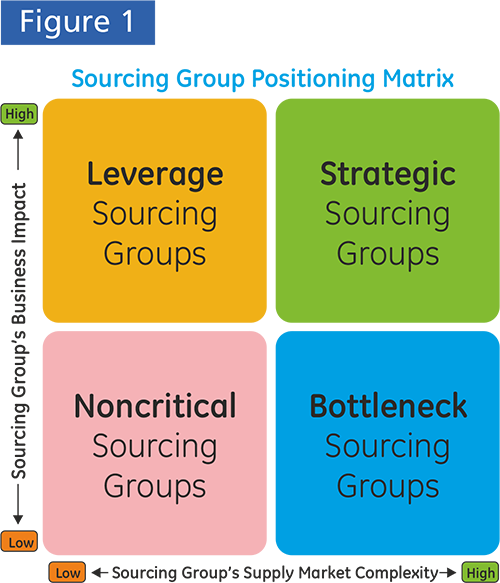
Most of us will recognize some version of Figure 1, where we segment spend into strategic categories. Most of the time when we talk about how we've approached our spend segments we inevitably hear the story about how we progressed clockwise through the mix.
In most cases, procurement professionals first move on uncontroversial, non-critical commodities to rack up some early wins. We follow with leverage items – here the market comes to us. While sourcing leverage items requires skill and experience, we tend to have a good negotiating position. But this advantage can evaporate as we move towards sourcing strategic and bottleneck items. Things like microelectronics and rareearth metals often fall into these categories. Sourcing in these situations require a different, more intense level of diligence and tact.
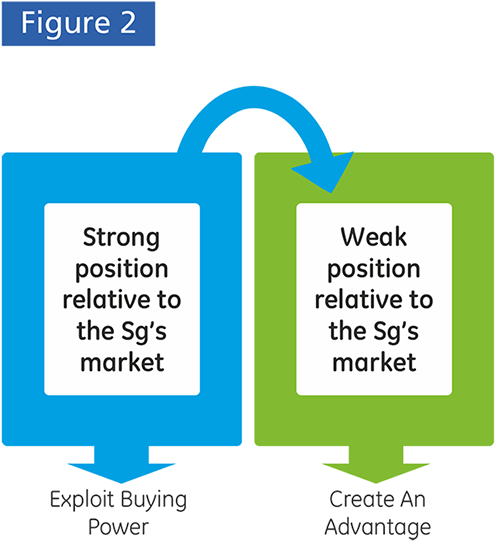
Classic levers (Figure 3) when on this side of ledger take a more conciliatory tone with tactics focused on specification simplification and standardization, more (supplier) favorable payment terms and joint process improvement where the customer becomes both buyer and resource (e.g. labor, engineering, capital, capacity) provider.
As the last decade came to a close and the weight of the recession was settling in, it was not unusual to see heavyweights such as Unilever, Philips, Dell and Apple, extending resources far back into their value chains to improve lead-time and achieve more reliable throughput from suppliers.
This sort of effort isn't new –the predecessors of Alcatel/Lucent were touting the benefits from mutual process improvement and joint lead-time reduction back when AT&T took Western Electric out of telephony regulation and won both the Shingo and Deming Prizes. This was in no small part due to their work in process development with suppliers as early as the late 1980s.
But, with the current pressure placed on every EBITDA dime, the once small appetite for investment in joint process improvement is even less pronounced today.
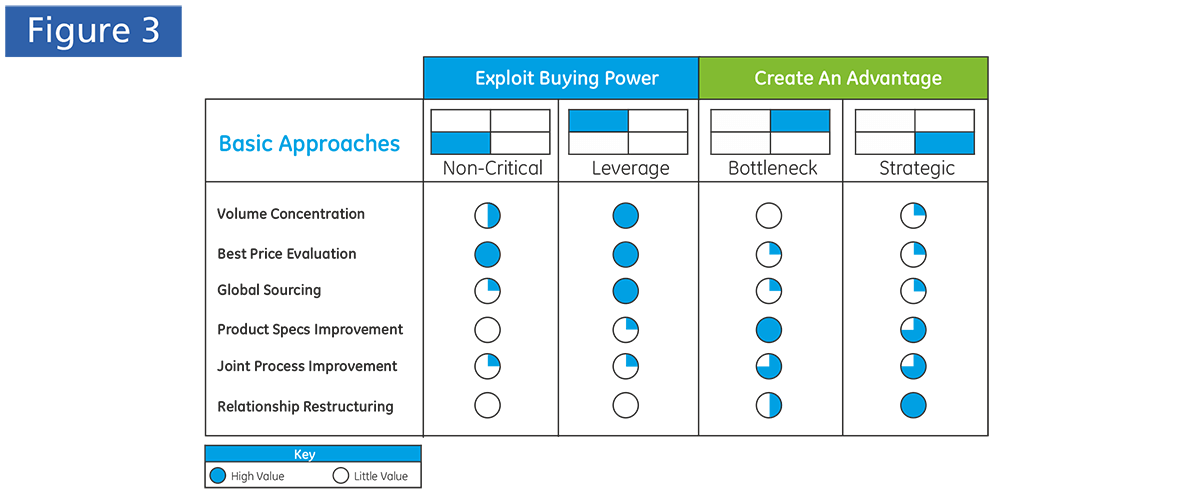
What to do when resources are slim and we find ourselves needing savings with few if any traditional levers available? Try something different.
Appear as Something Different
Have you ever watched a nature special on exotic animals? One animal that comes to mind is the frilled necked lizard – an animal that looks unassuming until frightened or under attack.
Like the lizard, there may be ways to make ourselves look different. We can become more attractive as a supply partner with the following techniques.
Noted author and supply chain strategist, David Simchi-Levi, describes matching supply chain strategies with products crossing demand uncertainty with lead time in the value chain (Figure 4). Simchi-Levi and colleagues develop on the notion that many companies have multiple supply chain needs served through a variety of potential models depending on the circumstance.
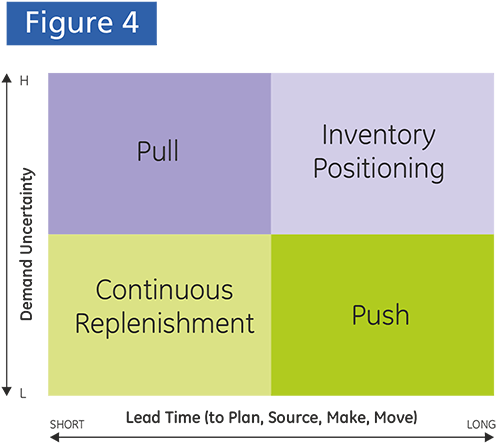
Supply chain innovators at HP developed a complimentary idea – Supply Chain Pipe (Figure 5), where different products pass through tailored plan, buy, make, move, sell/return (alla SCOR© ) combinations, ideally configured to deliver the appropriate level of speed, capacity, and flexibility, for the variety of products and services in the HP portfolio - from toner cartridges to complex consulting services.
- Simchi-Levi, D., Kaminsky, P., and Simchi-Levi, E. Designing and Managing the Supply Chain: Concepts, Strategies, and Case Studies. 3rd ed. Boston, MA et. al. , McGraw-Hill Irwin, 2008. p. 195.
- Verstraete, Christian. "HP Supply Chain - The Concept of Supply Chain Pipes." . N.p., 03 Nov 2008. Web. 23 May 2013. https://community.hpe.com/. The concept of the Supply Chain Pipe was introduced as early as 2004 publically as witnessed by the author. Attempts to credit specific individuals at HP presenting in 2005 are not currently available through ready sources. The chart used in this paper was offered to attendees in an Electronics Manufacturing Industry conference circa 2005. The citation offered is an explanation of HP's concept around Supply Chain Pipes.
- Supply Chain Operations Reference Model (SCOR) a Supply-Chain Council product ©2013.
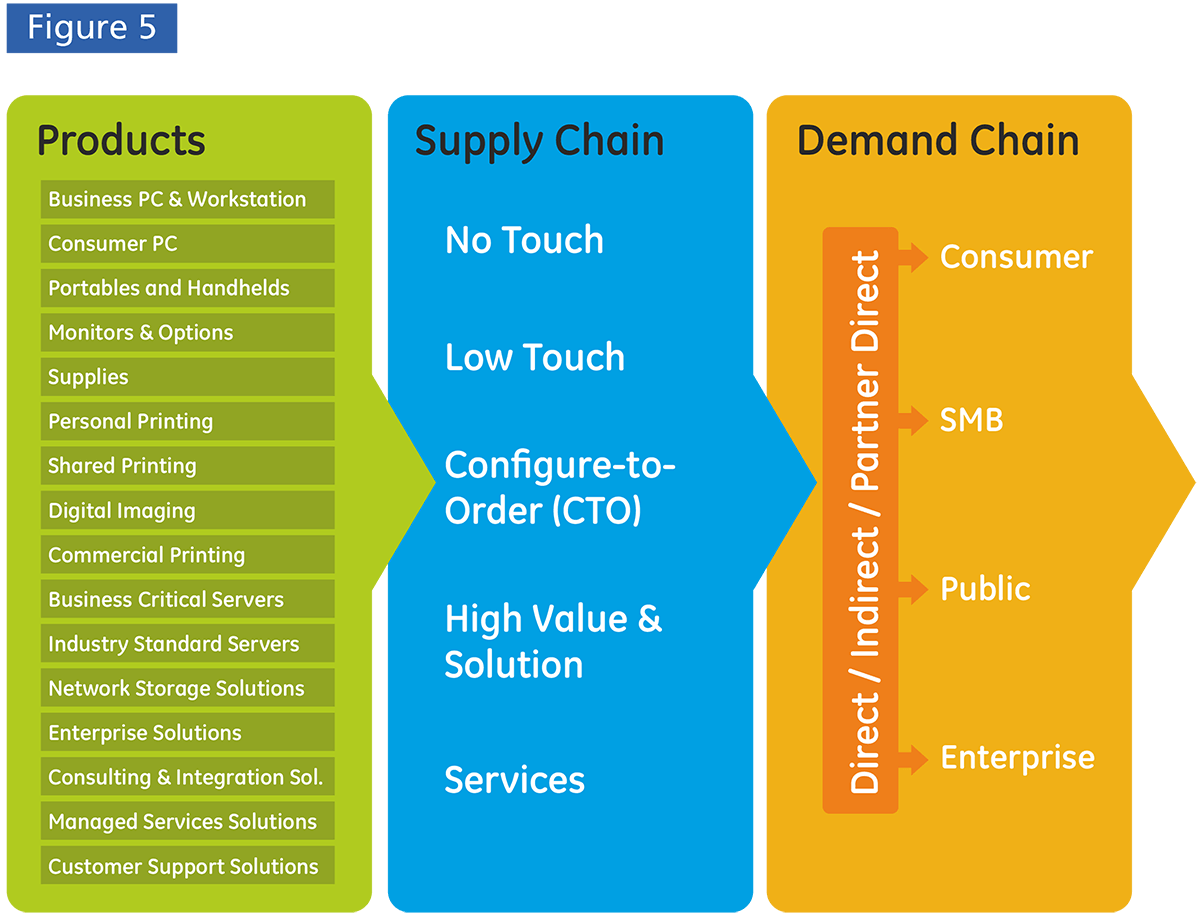
A customer that segments and solves its supply chain challenges using the techniques suggested by Simchi-Levi and HP can provide its suppliers with an opportunity for a new, more profitable relationship. For example:
- How could a supplier-partner gain direct views into consumptive demand and smooth out their own production and cash-flow in the process?
- How could a supplier-partner offer a broader set of solutions that could provide mutual value beyond that afforded through the traditional bid/buy, RFX process?
Segment – Then Consume More Predictably
Look closely at the figure below
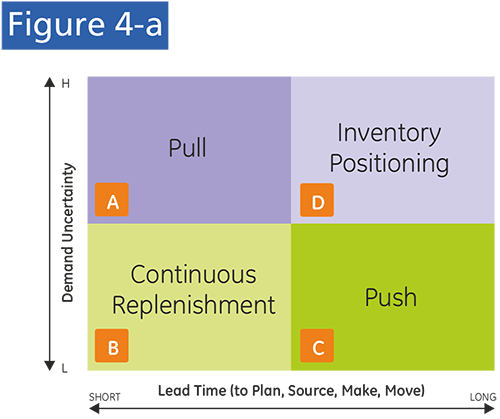
The dimensions on the 2X2 matrix are first “lead time” on the X-axis and “demand uncertainty” on the Y-axis. There are no larger causes for excess in every supply chain than uncertainty reported by customers in these dimensions. The biggest percentages of a supplier's safety stock calculations, fixed capital capacity surplus and additional transportation-related assets (trailers, rail cars, drivers and warehousing) are tied up because of the inability or unwillingness of customer to provide good visibility and assurance around true consumptive demand. It would likely not surprise anyone that, depending on circumstances, between 5% and 30% of joint company COGS and SG&A costs are tied to this uncertainty and variability.
While joint process improvement is always available to supply chain channel partners, a proactive and autonomous step that a potential customer can take ahead of negotiations, is to segment supply requirements by the demand profiles models suggested by Simchi-Levi et.al.
Take for example, the case of a large foodservice distributor. The company has dozens of area offices and distribution centers that serve customers within a 100- to 200-mile radius. Its mix of products included goods in three temperature zones (ambient, frozen and chilled) that are ordered daily and replenished frequently (Box B, Figure 4-a).
At the same time, the company also supplied a whole category of food-service support material and equipment, which is purchased in a more diverse geography, with completely different lead time, distribution and usage requirements (Box C, Box D, Figure 4-a).
Procurement viewed all supply, replenish, and payment practices between the food-service distributor and its suppliers through the same lens. Classic continuous review, EOQ-based, PO-and-receipt type material management was the tried and tested way to operate distribution centers.
With a change in strategy, along with some updated procurement system capabilities, the client instituted an exception-based periodic review (daily) inventory system, with visibility granted to suppliers for “par” levels for over 60% of the items fitting into the continuous replenishment category (Box B). A similar review was done for rapidly turning items like fresh proteins and produce. Further segmentation in that category revealed additional simplification, visibility and replenishment opportunities.
In all, the company was able to significantly reduce the impact of variability on inventory, which in turn translated to smoother, more consistent and more predictable ordering on more than 70% of the company's product portfolio.
The company in turn used the analysis done on variability as a lever and consideration in future negotiations with suppliers, which could in-turn improve their visibility to demand and shrink their own order-to-cash cycles.
At the end of the day, this stands as an important win for what has historically an industry with razor-thin margins, as well as an important lesson on how a customer can boost its attractiveness as a supply chain partner.
Segment – Then Use Suppliers More Broadly
When HP conceived Supply Chain Pipes, they coined brief phrases to describe them (Figure 5, second column). Terms like “no touch”, “low touch” and “high value” were used to describe different supply chain requirements for each segment of the business, indicating the level of service or other distinctions necessary in providing product or service to customers.
One advantage to segmenting the supply chain of a company into pipes is that it gives a more descriptive and complete picture of the elements necessary to deliver effectively to a customer group.
This reminds me of a conversation with a colleague who heads the project transportation division for a major international third-party logistics (3PL) provider. When I asked him about some keys to better transportation-category procurement in a particular setting, he reminded me of an axiom often forgotten:
“The more complete a view we can give a supplier around an opportunity, the more creative and effective a solution can be.”
Recently, we were engaged by a data & information-service infrastructure provider to find ways to improve the performance of a historically underperforming's asset portfolio. We discovered that one supply chain infrastructure was serving customers with four or five different time requirements (SLAs), ranging from 4-8 hours to several days and even weeks.
We reached out to a number of longstanding communication-device suppliers, including Cisco and Alcatel-Lucent, asking them about their experience and processdevelopment efforts in serving their mostcritical and time-sensitive customers.
These suppliers had extensive experience in spare part service and had created several different models in their own supply chains that addressed the needs for rapid response. We used these design concepts to develop a joint-service offering that addressed endcustomer time delivery requirements more completely. In the end, we helped achieve better end-customer satisfaction while providing new ground for negotiations and greater perceived value between what had become a stagnant supplier/customer relationship.
While more formal partnerships are not always possible or practical, the creative notion of taking a broader view on a particular need proved valuable to both provider and supplier.
Recommendations & Conclusion
If you are facing difficult upcoming negotiations, consider how you can appear as a better overall partner to the supplier:
- Become an easier client for the key supplier to work with by segmenting demand more carefully and providing better visibility to your true, consumptive demand. This removes variability from your partner's supply chain, helping them operate more costeffectively. Share in that additional codeveloped, supply-chain surplus.
- Give your supplier a shot at a bigger pool of margin by showing them areas where they can bring better, more holistic solutions to end-user challenges. Again, a co-developed solution can create more total supply chain surplus and render you as a customer more attractive and a good partner for the long term.
When customers enter a negotiation with great actual or perceived leverage, there are a number of tried-and-true negotiating strategies, some mentioned in outset of this paper. In negotiations where the balance of power tilts toward the supplier, savvy procurement professionals have options to – if not entirely level the playing field – create more leverage for themselves and better deals for the enterprises they represent.
This requires both careful analysis of (a) both your own and your supplier's business and operational requirements (b) creative thinking about mutually beneficial outcomes and (c) the flexibility to achieve them. In the end, you'll find that being a better customer produces its own leverage, perhaps just enough to get you and your company a much better deal.

